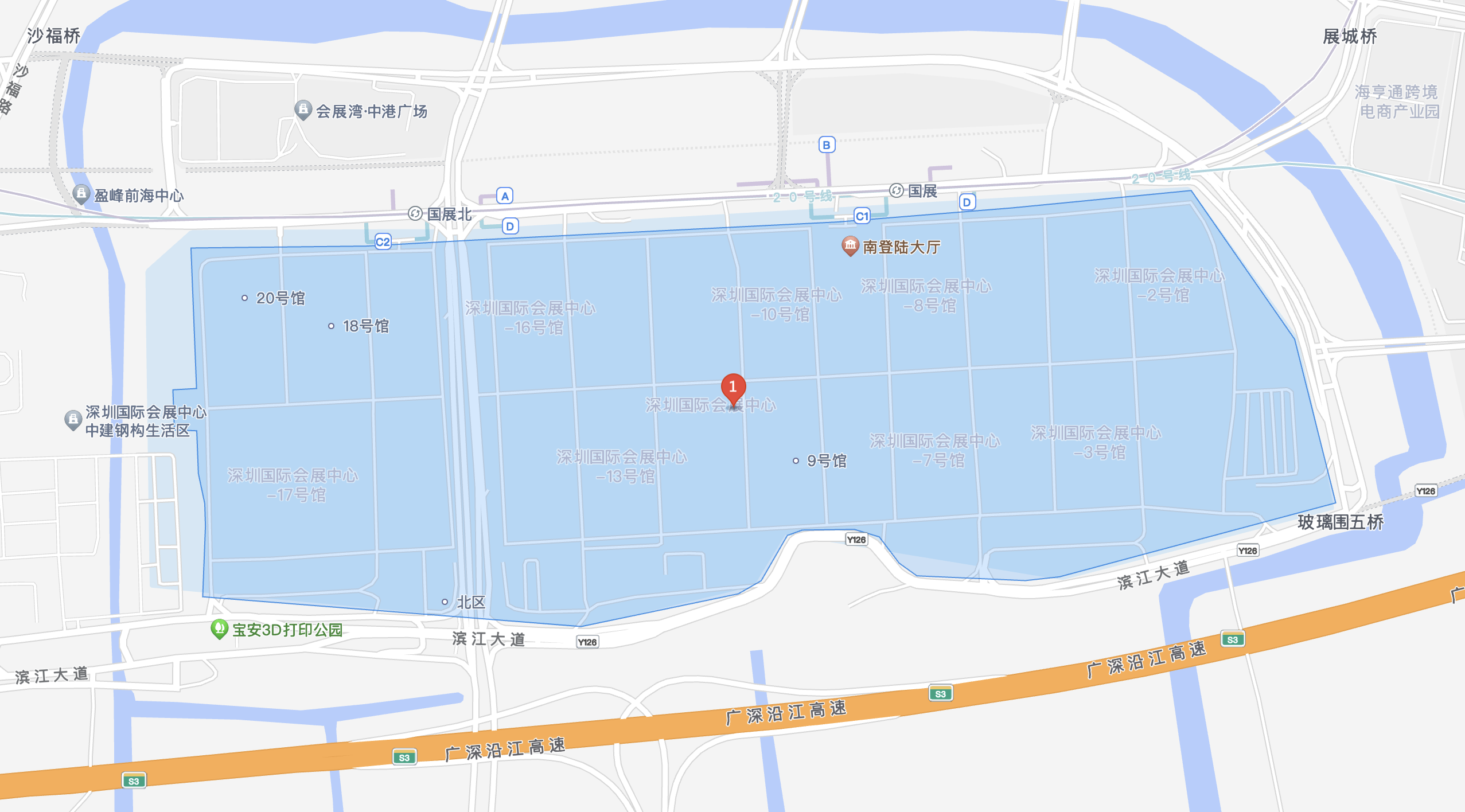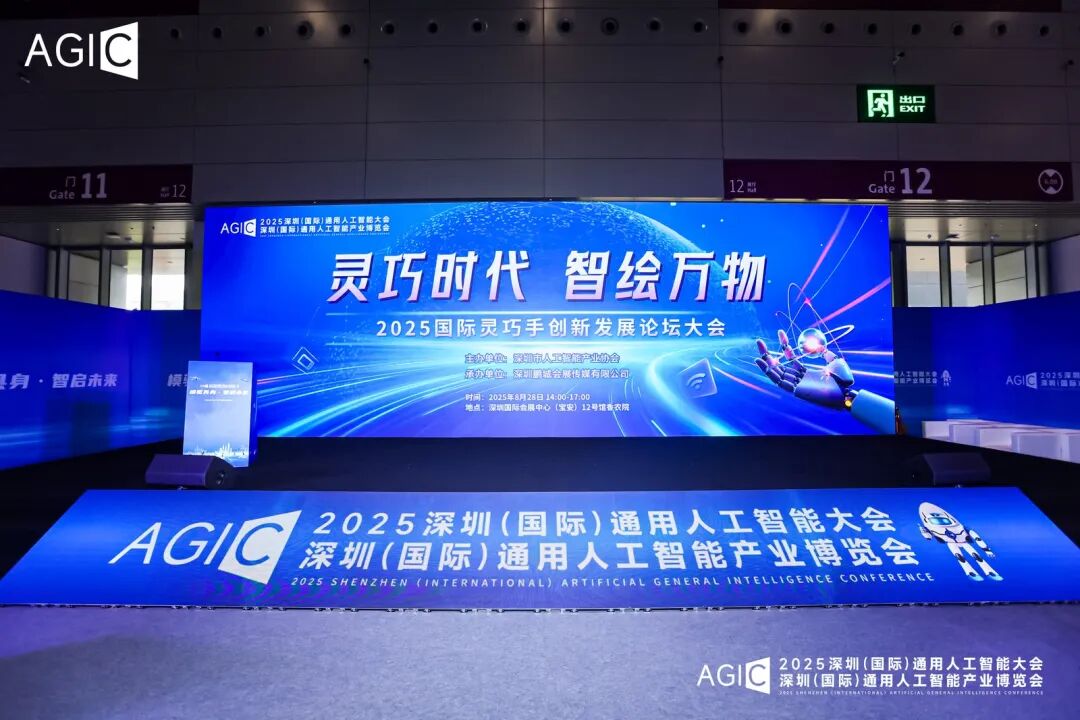
[AGIC Parallel Forum] 2025 International Dexterous Hands Innovation and Development Forum, part of the 2025 Shenzhen (International) General Artificial Intelligence Conference series, was successfully held on the afternoon of August 28th at the Shannong Courtyard in Hall 12 of the Shenzhen World Exhibition and Convention Center. The forum, themed "Dexterous Era, Intelligent Drawing of Everything," brought together academicians, experts, and business leaders for in-depth discussions on technological breakthroughs, ecosystem implementation, and industrial applications for dexterous hands, aiming to unlock new paths for dexterous hands to empower a wide range of industries in the era of general artificial intelligence. The forum was a complete success, exploring the new vision of "Dexterous Era, Intelligent Drawing of Everything."
Using the forum as a bridge, we embark on a new journey of high-quality development for the dexterous hand industry.
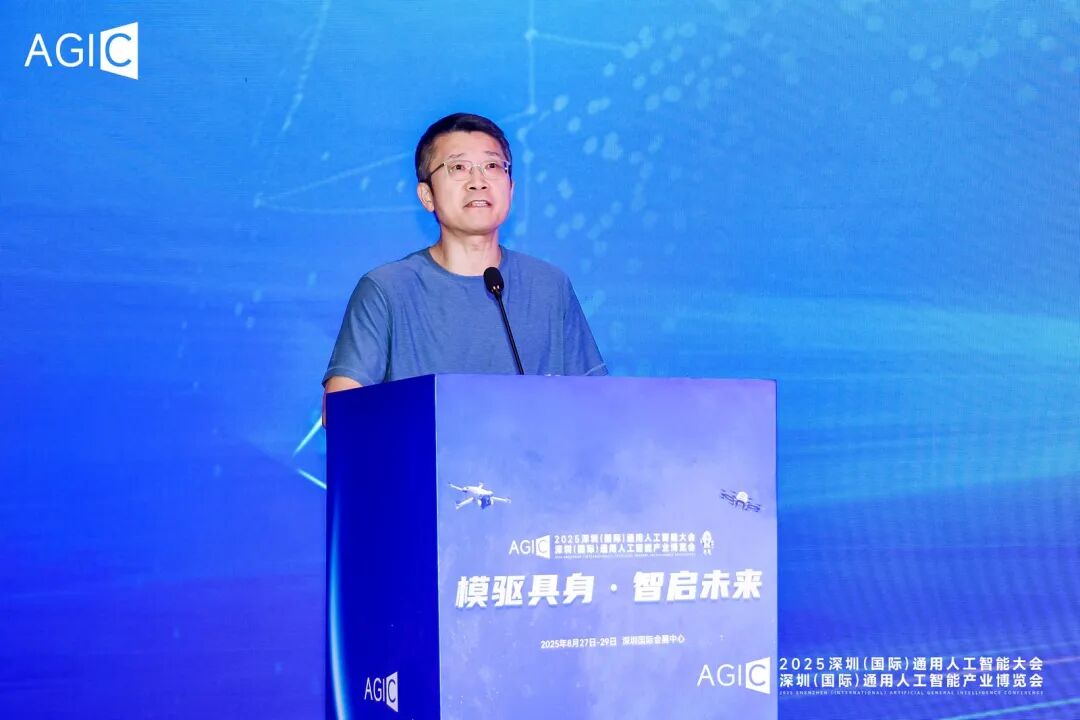
At the opening of the conference, Zhao Shukai, Founding President of the Shenzhen Artificial Intelligence Industry Association, delivered a speech. On behalf of the association, he thanked the participating guests and pointed out that dexterous hand technology is currently moving from "micro-breakthroughs" to "macro-explosions." It is not only a core component for the intelligent upgrade of robots, but also a key engine driving new high-quality productivity in the industry.
As a global frontier in AI and high-end manufacturing, Shenzhen has established a comprehensive ecosystem encompassing "technology R&D, component mass production, and scenario applications." The association, with the mission of "gathering innovative forces and promoting win-win industrial outcomes," is supporting the large-scale commercialization of dexterous hand technology. President Zhao emphasized that this forum is a high-level platform for global exchange of wisdom from "government, industry, academia, research, and application." It aims to foster the exchange of ideas, solve industry challenges, and build a new industry ecosystem of "open collaboration, symbiosis, and shared prosperity." He also proposed the slogan "Dexterous Era, Intelligent Painting of Everything," which not only provides technical insights but also calls for development, calling on the industry to jointly build an inclusive environment so that dexterous hand technology can empower industry and serve life. Finally, he wished the forum a complete success and looked forward to participants stimulating thinking, deepening collaboration, and sharing opportunities, working together to achieve a win-win situation in the new era of dexterity.
Shandong University Shenzhen Research Institute leverages industry-university-research integration to promote breakthroughs in the dexterous hand industry.
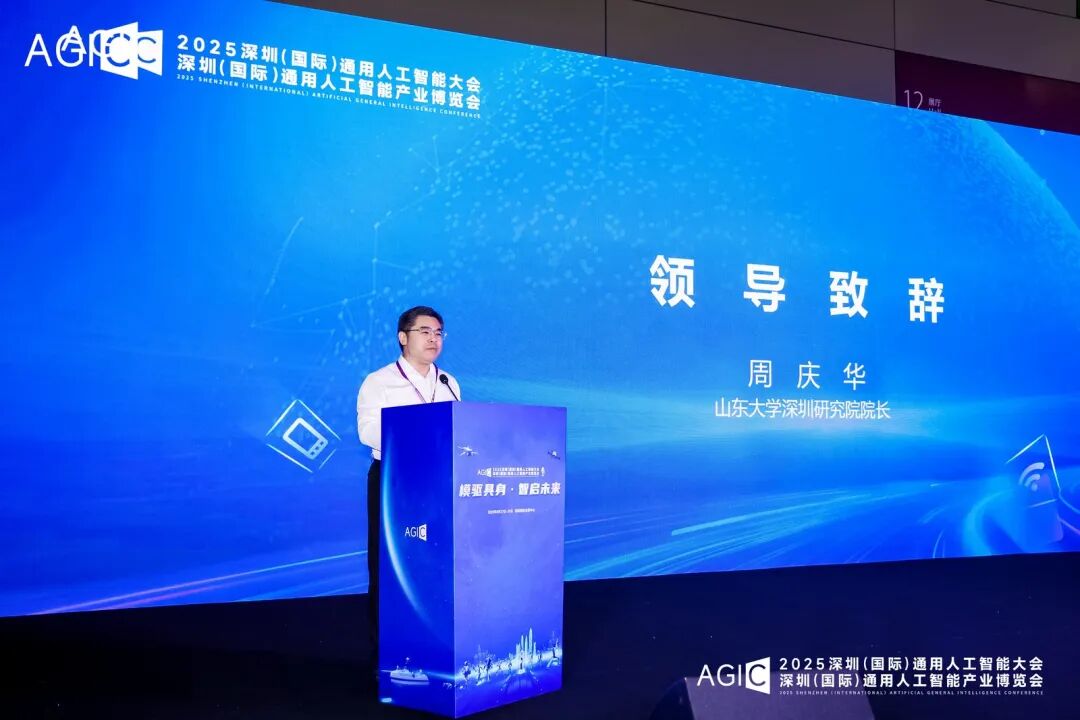
Zhou Qinghua, Director of Shandong University Shenzhen Research Institute, congratulated the forum on behalf of Shandong University and shared the university's path to empowering scientific research. He explained that Shandong University, as a world-class university, boasts strong strengths in Class A disciplines such as mathematics and mechanics, and its 11 national key laboratories have laid a solid foundation for research in dexterous hand technology.
Director Zhou noted that dexterous hand technology is currently at a critical stage, transitioning from "laboratory theory" to "industrial practice." While leveraging the advantages of multidisciplinary integration to address intelligent manufacturing challenges and empower medical rehabilitation, it also faces four major challenges: materials, algorithms, cost, and standardization. He mentioned that Shandong University has been deeply engaged in fields such as bionic structures and force control algorithms for dexterous hands for many years. As a "bridgehead" for the Greater Bay Area, the Shenzhen Research Institute has facilitated the commercialization of over 420 research findings over the past decade, incubating companies such as Yuejiang Technology. The newly unveiled "Embodied Intelligence and Robotics Research Center" this month has already deployed its technology in companies such as China General Nuclear Power Group and BYD.
Looking ahead, President Zhou stated that the Institute will continue to focus on the "deep integration of industry, academia, research, and application." Through joint talent development and open access to scientific research resources, the Institute will help dexterous hands overcome bottlenecks in accuracy, cost, and application scenarios. Furthermore, the Institute will promote the joint development of innovation platforms between universities, local governments, and enterprises, aligning research with industry needs and driving the high-quality development of the dexterous hand industry.
Academicians Led the Way, Decoding the Core Technologies of Dexterous Hands
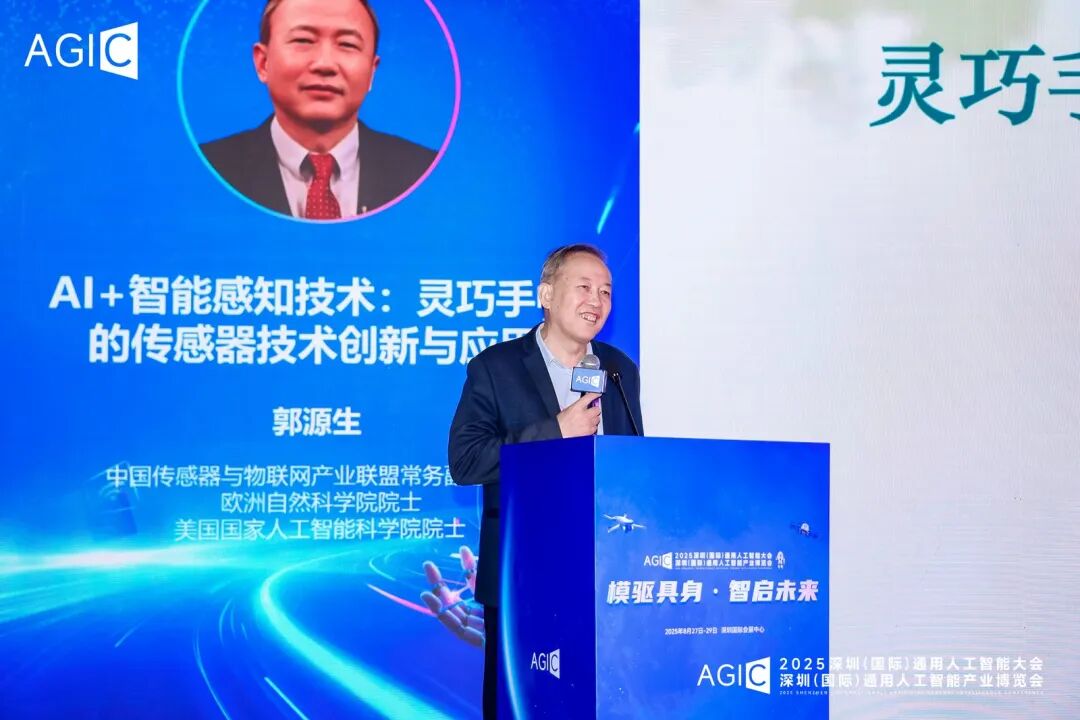
The forum opened with a presentation by Guo Yuansheng, Executive Vice President of the China Sensor and Internet of Things Industry Alliance, Fellow of the European Academy of Natural Sciences, and Fellow of the U.S. National Academy of Artificial Intelligence, titled "AI + Intelligent Perception Technology: Sensor Technology Innovation and Application in Dexterous Hands." He pointed out that the precise interaction of dexterous hands relies on "perceptual nerves"—sensor technology. From flexible pressure sensing adapted to complex grasping scenarios to multimodal sensor fusion for intelligent environmental recognition, sensors are breaking through traditional boundaries. Drawing on the practical experience of the Internet of Things Industry Alliance, Academician Guo analyzed the collaborative architecture of the "perception layer-transmission layer-application layer," emphasizing the need for sensor technology to evolve toward "high precision, low power consumption, and miniaturization" to lay a solid foundation for dexterous hands to move from the laboratory to practical application.
An industrial perspective provides insights into the future of the dexterous hand ecosystem.
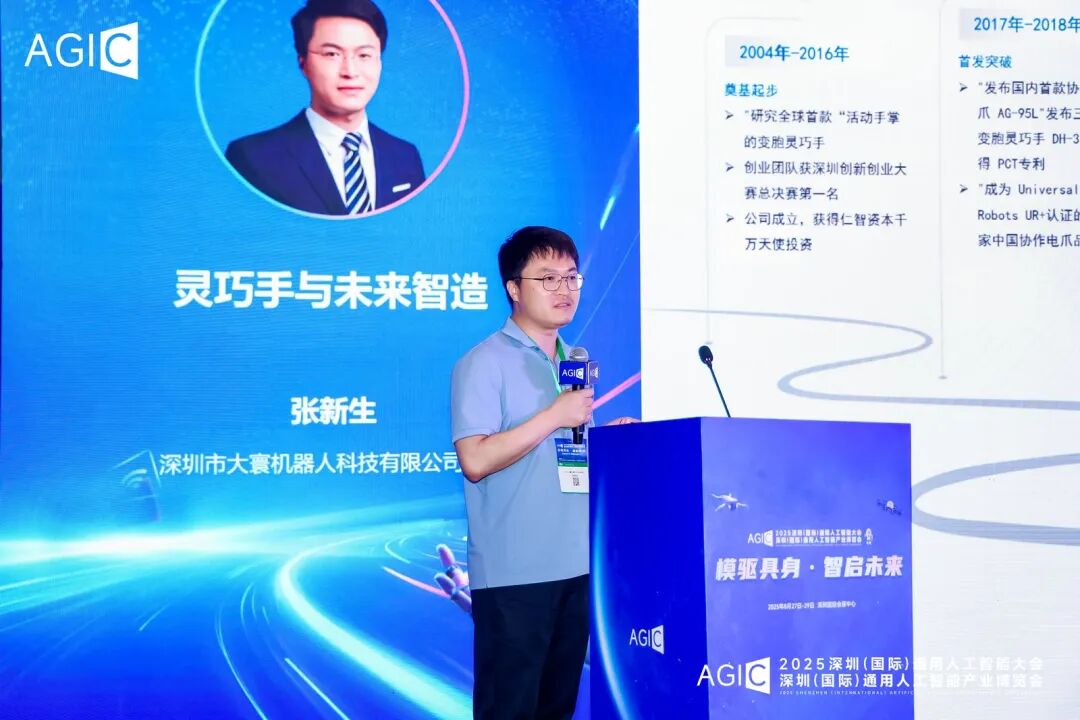
Zhang Xinsheng, CTO of Shenzhen Dahuan Robot Technology Co., Ltd., focused on "Dexterous Hands and Future Intelligent Manufacturing," exemplifying how dexterous hands are reshaping production models using industrial collaboration scenarios. He showcased Dahuan Robotics' application cases in 3C electronics and precision assembly. Through the dexterous hand's adaptive grasping and precise manipulation, it achieves an upgrade in "human-machine collaboration" on production lines, addressing the challenges of small-batch, high-variety production. Zhang Xinsheng also envisioned the convergence of "dexterous hands + AI," proposing the construction of an open ecosystem to connect algorithms, hardware, and scenarios, making dexterous hands a standard tool for future intelligent manufacturing.
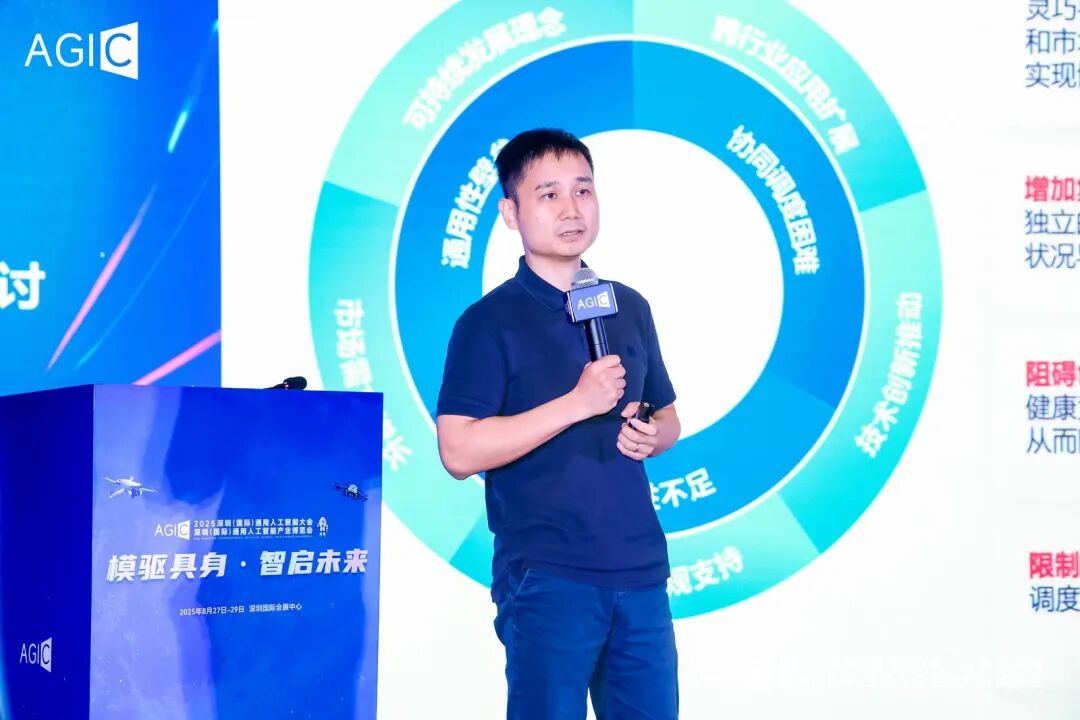
Chen Yidong, General Manager of Shenzhen Zhaowei Dexterous Technology Co., Ltd., spoke on the topic of "Discussing the Implementation of the Dexterous Hand Ecosystem in the Context of Embodied Reality." He emphasized that "in the era of embodied intelligence, dexterous hands are a key vehicle connecting virtual and real life." From the "life-like interactions" of consumer service robots to the "complex task execution" of industrial unmanned systems, Zhaowei is promoting the implementation of the dexterous hand ecosystem through a "technical modularization + scenario customization" approach. Discussing ecosystem co-building, Chen Yidong, combined with practical experience sharing, advocated for industry chain collaboration, focusing on cost control and adaptability optimization, and jointly accelerating the transition of dexterous hands from "concept products" to "large-scale applications," broadening the path to industrial implementation through collaborative efforts.
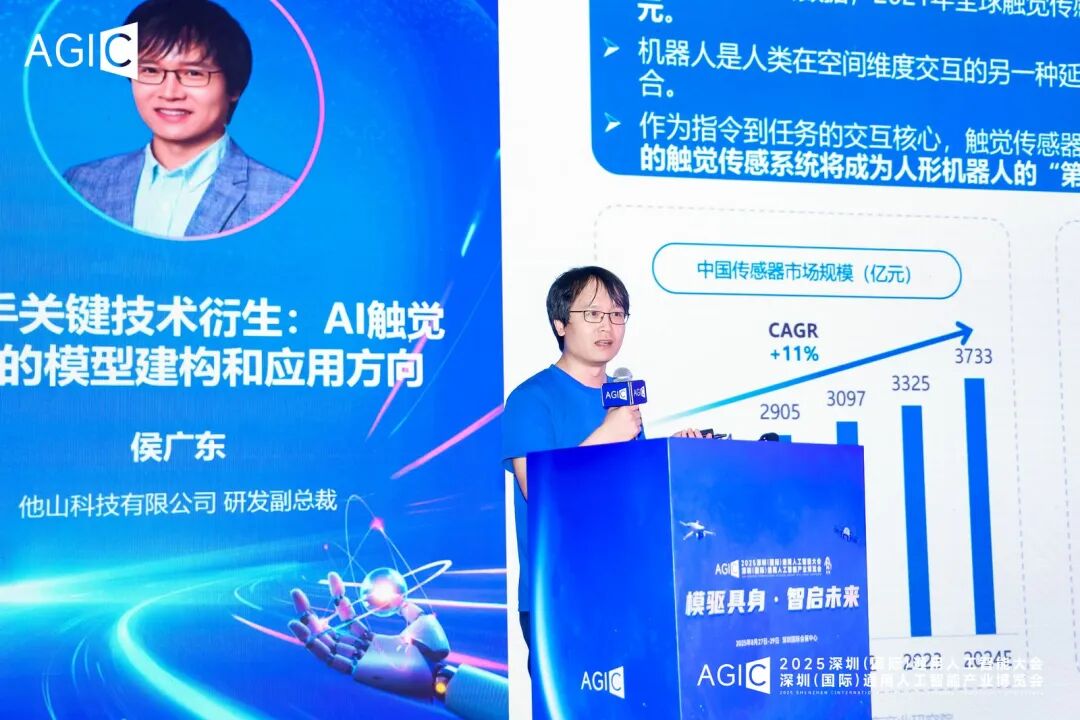
Hou Guangdong, Vice President of R&D at Tashan Technology Co., Ltd., delved into the topic of "Key Technology Derivatives of Dexterous Hands: Model Construction and Application Directions for AI Tactile Sensing." Starting from the mechanism of tactile perception, he explained how AI empowers tactile sensing upgrades: through deep learning to train tactile models, dexterous hands can "touch and understand"—identifying materials, judging force, and sensing deformation. Hou Guangdong, drawing on the R&D practices of Heshan Technology, demonstrated the potential of tactile sensing in medical surgical robots and intelligent prosthetics. He proposed a "data closed loop + cross-domain migration" technical approach to give dexterous hands a more intelligent "tactile brain."
Ecosystem collaboration: Building a new paradigm for industrial cooperation
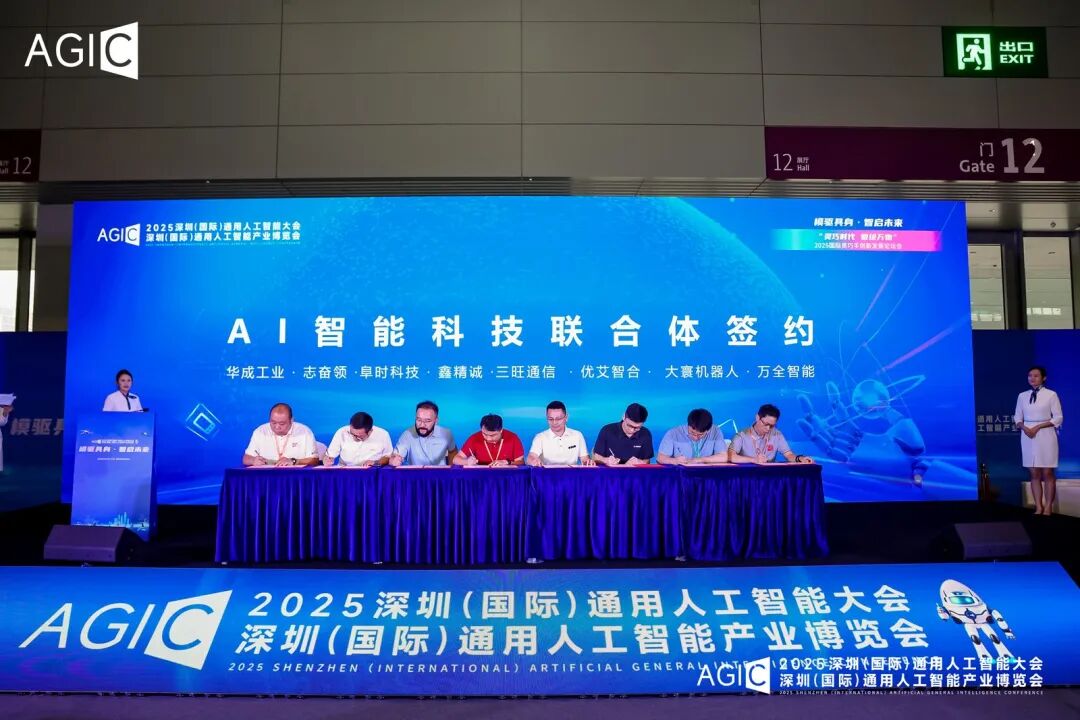
A key feature of the forum was the debut of the AI Intelligent Technology Consortium, embracing the philosophy of "Synergy and Symbiosis, Connecting the Future." Based on the global AI industry landscape and centered on strong industry chain integration, the consortium aims to break down barriers in R&D, manufacturing, and application, and strengthen upstream and downstream support. During the event, the consortium released the "Joint Charter of the Artificial Intelligence Intelligent Technology Consortium," which outlines the core directions and action guidelines for collaborative industry development and clarifies the consortium's mission.
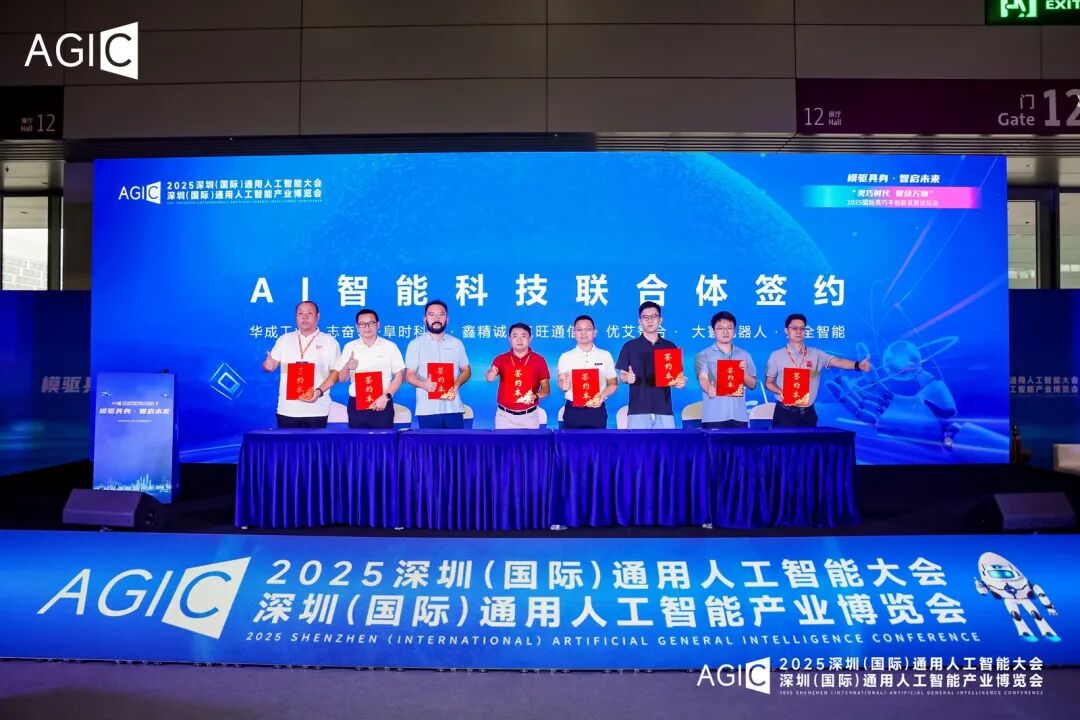
Following the release of the charter, the signing ceremony for the AI Intelligent Technology Consortium was officially held. Representatives from eight companies—Shenzhen Huacheng Industrial Control Co., Ltd., Shenzhen Zhivening Technology Co., Ltd., Fushi Technology Co., Ltd., Shenzhen Xinjingcheng Sensing Technology Co., Ltd., Shenzhen Sanwang Communication Co., Ltd., Shenzhen UAI Robotics Technology Co., Ltd., Shenzhen Dahuan Robotics Technology Co., Ltd., and Shenzhen Wanquan Intelligent Technology Co., Ltd.—jointly signed a contract to establish a cooperative relationship. This move not only moves the shared vision from "concept" to "practice," but also solidifies the founding mission of the organization: "Cooperation and symbiosis, connecting the future." It marks a key step in the deep collaboration of technology R&D, application scenarios, and industrial capital in the field of dexterous hands, injecting a strong "ecological impetus" into the accelerated implementation of technology.
Roundtable Discussion: Exploring the "Breaking the Boundary" and "Implementation" of Dexterous Hands
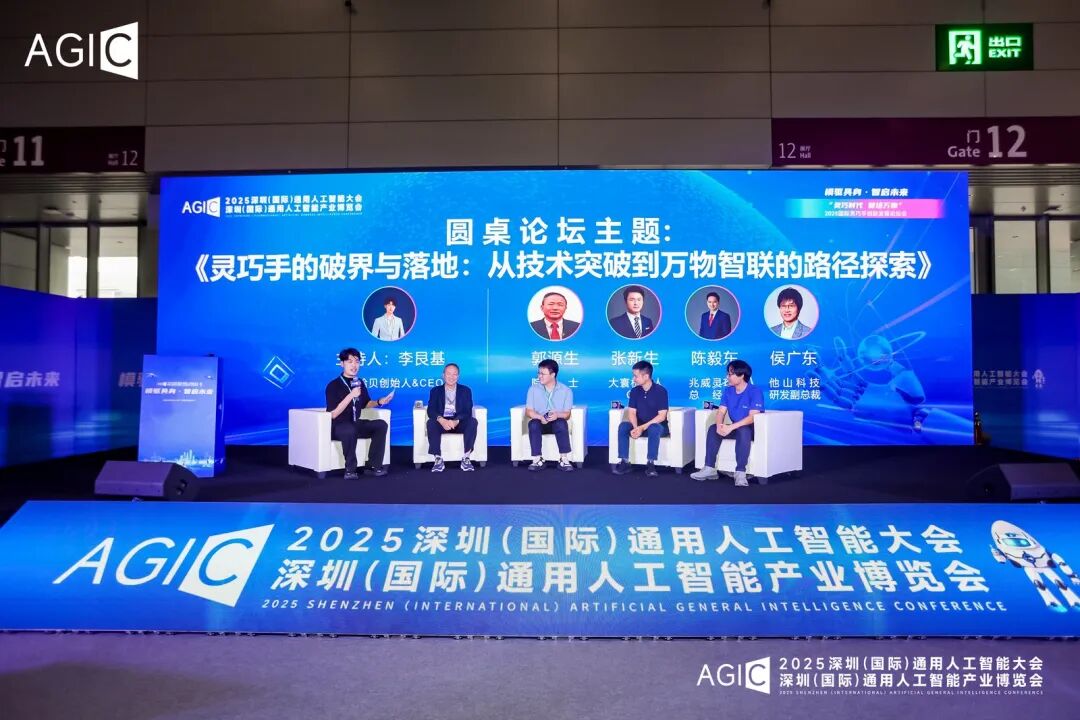
The final roundtable discussion, moderated by Li Genji, Founder and CEO of Jinghai Shibei, featured academician Guo Yuansheng, Dahuan Robotics CTO Zhang Xinsheng, Zhaowei Dexterous Hands General Manager Chen Yidong, and Heshan Technology R&D Vice President Hou Guangdong, who discussed "Breaking the Boundary and Implementation of Dexterous Hands: Exploring the Path from Technological Breakthroughs to the Internet of Everything."
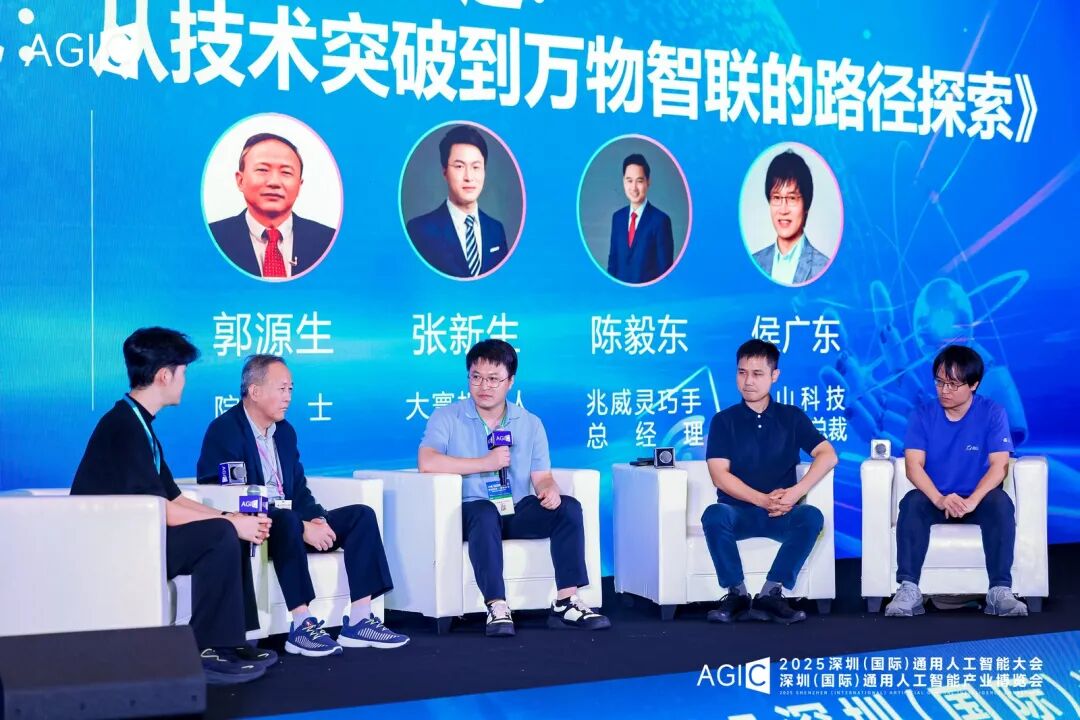
Focusing on "Technology Breaking Boundaries," the panelists discussed breakthroughs in dexterous hand performance bottlenecks, from material innovation to enhance flexibility and durability to algorithm optimization for more natural motion control. Regarding "application scenarios," they focused on the pain points of commercializing laboratory findings and proposed a step-by-step approach: "Technology Verification - Scenario Pilot - Large-Scale Deployment," enabling the integration of dexterous hands into diverse industries, including industrial manufacturing, consumer services, and healthcare.
The forum concluded, ushering in a new journey for the dexterous hand industry.
The successful 2025 International Dexterous Hand Innovation and Development Forum, titled "Dexterity Era, Intelligently Drawing Everything," established a platform for "idea exchange and ecosystem collaboration" for the development of dexterous hand technology and industry. From the deep technical expertise of academicians to the practical exploration of enterprises and the collaborative development of an ecosystem, the forum forged a consensus: dexterous hands are moving from a "technological singularity" to an "industrial singularity," and will, with the "power of dexterity," paint a new picture of intelligent connectivity for all things.














